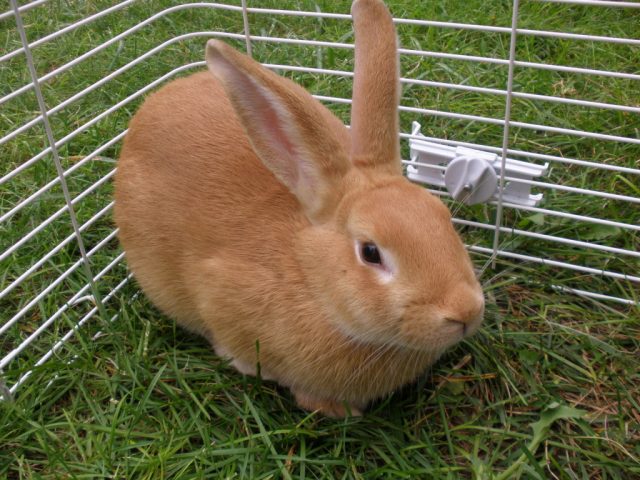Type the name of the breed you're looking for below
[wpdreams_ajaxsearchlite] Don't see the breed your're looking for? Click here and let us know!
Breed Characteristics
1 paw - breed exhibits the least amount of this characteristic
5 paws - breed exhibits most amount of this characteristic
Palomino rabbit
| Origin | The Palomino rabbit. We can imagine that this American creation greets you with a golden smile and a firm handshake, optimistic despite the fact that it is struggling for recognition. The name of the breed’s national specialty club is unique: the Palomino Co-breeders. The club’s emblem includes two clasped hands over a golden rabbit, commemorating the handshake that the breed’s founder, Mark Youngs, would give new breeders when he sold them rabbits. Yes, the Palomino is golden coloured, like the famous Palomino horse. The breed recognizes two varieties: golden and lynx. Genetically, golden is a bright fawn. Lynx is not a true lynx (lilac agouti), but simply the dilute version of golden, which most breeds call cream. The body type is commercial, similar to that of a New Zealand, and the breed has flyback fur. Like many of the people that raise them, Palominos have friendly personalities. Breeders say that does make excellent mothers and raise healthy-sized litters. Fryers grow quickly to dress-out size. Despite its good temperament and valuable commercial properties, the Palomino rabbit escapes many people’s attention. There are a number of breeds in its size and body type category that have special colouration: the American Sable, the Crème d’Argent, and the American Chinchilla, to name a few. There simply aren’t enough breeders interested in that type of rabbit for any of them to become very popular. Most of those breeds are supported by an organization called the American Livestock Breeds Conservancy, which strives to promote and protect endangered livestock breeds. The Palomino, however, is at a disadvantage because the ALBC will not sponsor it, deciding that the breed was developed too recently and does not represent a distinct genetic population. Whether or not that’s the case, the Palomino has a heartwarming history. Mark Youngs of the Lone Pine Rabbitry in Washington state had raised rabbits for decades and always wanted to start a new breed. During the late 1940’s and early 50’s, crossing various commercial-typed rabbit eventually gave him fawn rabbits he called tawnies. Soon he enlisted the help of several “co-breeders.” Together they developed their sunny bunnies into a breed, and obtained an ARBA working standard under the name “Washingtonian.” The breed was first presented at the ARBA convention in 1953, where the name was changed to Palomino. Despite some difficulties, the Palomino was finally recognized in 1957. |
Physical Attributes
| Weight | 8 - 11 lbs. (3.6 - 5 kg) |
| Ear Type | Erect |
| Fur Type | Flyback |
| Colours | This rabbit has beautiful fur of a golden or lynx colour. |
| Appearance | Body is meduim-length, ears medium-long and upright. |
| Other Considerations | Life Expectancy: 5 - 8 years Temperament: Laid-back |
| Best Kept In | Pen. Cage or Yard. |



